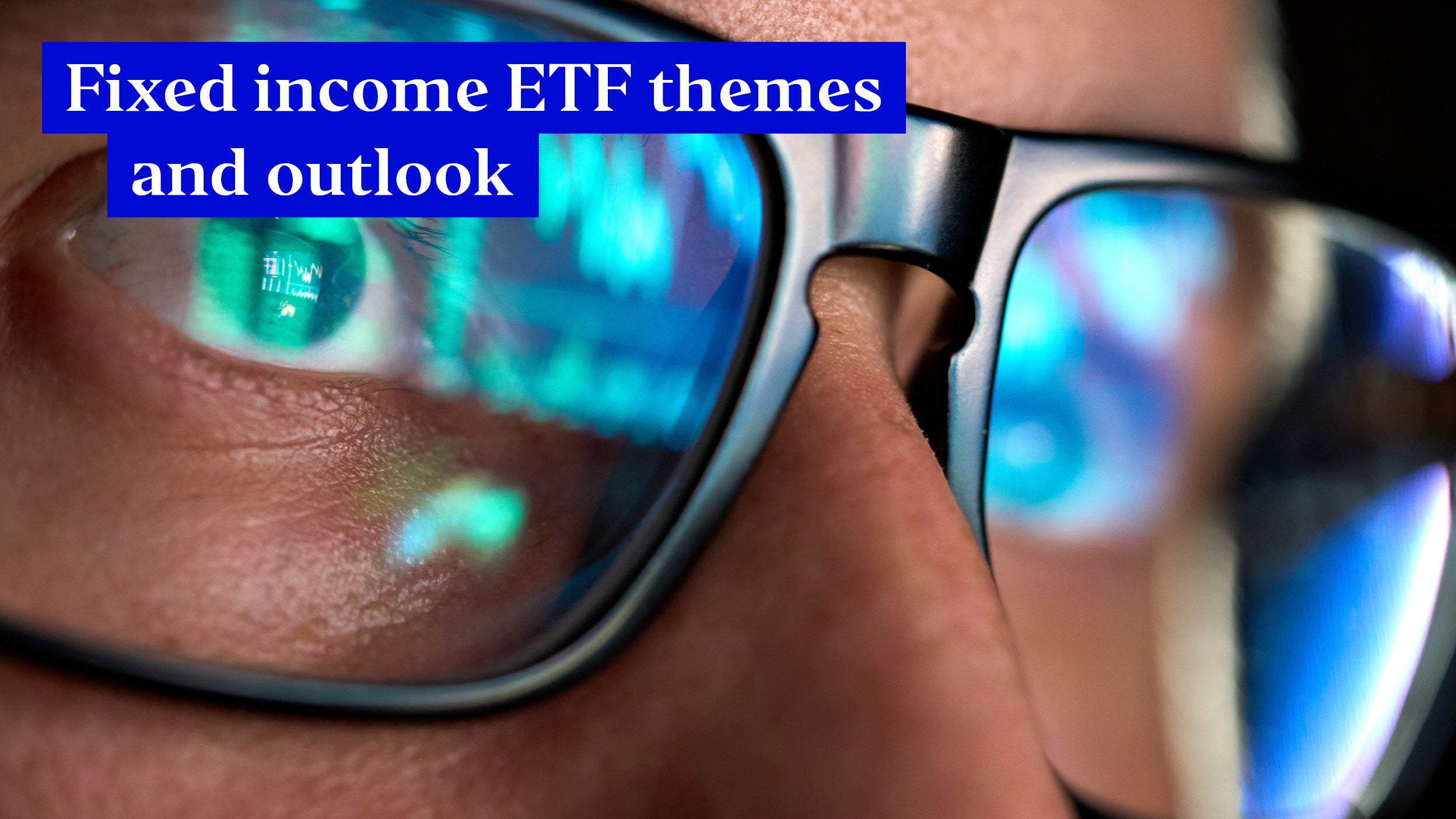Fixed income ETFs: themes and outlook for 2022

While core holdings in conventional government and corporate bonds continue to be important elements of a diversified portfolio, many ETF investors are now also using different segments of fixed income to achieve other objectives. In the first 10 months of 2021, the most significant interest has been in inflation-linked assets and ETFs applying environmental, social and governance (ESG) factors in their underlying index methodology. Looking ahead to 2022, we think interest rates, inflation and central bank policy are likely to play important roles in where investors position themselves in terms of duration and credit risk, but outside of these considerations we expect even stronger demand for ESG ETFs as well as more niche areas that can be used to complement conventional bonds.
Starting with the fundamentals
Your view on economic issues such as the path of growth, inflation and interest rates will usually affect your choice of fixed income investments, and even though these calls have been made easier in recent years by the Federal Reserve’s determination to maintain loose policy to counter the impact of the pandemic, the future is anything but certain. Unlike during more normal economic conditions, it’s less clear what impact tapering or any increase in interest rates will have on inflation and growth, much less bond yields. If effective, we could see a flattening of the yield curve as the market begins to factor in a moderation in growth and decline in inflation pressures further out, whereas inflation that turns out to be more persistent could see the curve steepen.
If you have a strong view on the possible outcome, ETFs offer a low-cost way to express it. There are ETFs with exposure to specific maturity buckets in Treasuries or other government bonds, as well as those offering exposure across the maturity spectrum. Shorter-dated bonds tend to be less sensitive to interest rates than longer-dated bonds, but you also need to look at the types of bonds in your portfolio and their correlation to one another.
Some hybrid securities could help diversify core bond portfolios given their historically low correlation. These include Additional Tier 1 (AT1) contingent convertible bonds issued by European banks as well as hybrid bonds issued by corporates in non-financial sectors. These securities are bonds that also have equity-like characteristics. They are subordinate to senior debt, which means they have a lower credit rating but, in turn, generally offer a higher coupon than the senior debt from the same issuer. Many of the issuers are well-known, investment-grade names, making hybrids an interesting alternative to taking on increased credit risk in the conventional High Yield segment.
ESG to cement its place in fixed income ETFs
The application of ESG filters and screening techniques is relatively new to fixed income indices – and the ETFs that follow them. However, recent flows show these ETFs are gaining traction, a trend that we expect to continue in the new year. Most of these flows have been into investment-grade credit and mainly developed markets where ESG data is more readily available.
One of the hurdles has been constructing an ESG index without sacrificing an unacceptable amount of yield. That’s been particularly relevant with yields already so low to begin with. Typically, higher yields are found in lower quality issuers or industries such as tobacco that a responsible investor would generally want excluded. An ESG index may, therefore, have higher quality names with lower ESG risks but, as a result, a lower overall yield versus the standard index. We believe this will be a key focus in 2022 as ETF providers search for increasingly better outcomes for ESG investors.
Conclusion
The new year might bring unanswered questions, but we believe fixed income ETFs will continue providing many of the solutions. We expect core fixed income to gather a fair share of flows in 2022, but many investors will probably favour products that include ESG in their methodology. We also believe investors will look to include other segments of the broad fixed income universe for diversification purposes or a possible pick-up in yield.
Related insights
Risk warnings
-
The value of investments and any income will fluctuate (this may partly be the result of exchange rate fluctuations) and investors may not get back the full amount invested.
Important information
-
This marketing communication is for use in Austria, Belgium, Dubai, Denmark, Finland, France, Germany, Greece, Isle of Man, Italy, Ireland, Jersey, Guernsey, Luxembourg, Netherlands, Norway, Portugal, Spain, Sweden, Switzerland by Professional Investors, and by Qualified Clients/Sophisticated Investors in Israel. Investors should refer to the legal documents prior to investing. By accepting this document, you consent to communicating with us in English, unless you inform us otherwise. This document should not be considered financial advice. Persons interested in acquiring the product should inform themselves as to (i) the legal requirements in the countries of their nationality, residence, ordinary residence or domicile; (ii) any foreign exchange controls and (iii) any relevant tax consequences. Any calculations and charts set out herein are indicative only, make certain assumptions and no guarantee is given that future performance or results will reflect the information herein. For details on fees and other charges, please consult the prospectus, the KIID and the supplement of each product. Where individuals or the business have expressed opinions, they are based on current market conditions, they may differ from those of other investment professionals and are subject to change without notice. This document has been communicated by Invesco Asset Management Limited, Perpetual Park, Perpetual Park Drive, Henley-on-Thames, Oxfordshire, RG9 1HH, United Kingdom, authorised and regulated by the Financial Conduct Authority; Invesco Asset Management Deutschland GmbH, An der Welle 5, 60322 Frankfurt am Main, Germany; Invesco Management S.A., President Building, 37A Avenue JF Kennedy, L-1855 Luxembourg, regulated by the Commission de Surveillance du Secteur Financier, Luxembourg; and Invesco Asset Management (Schweiz) AG, Talacker 34, 8001 Zurich, Switzerland.


